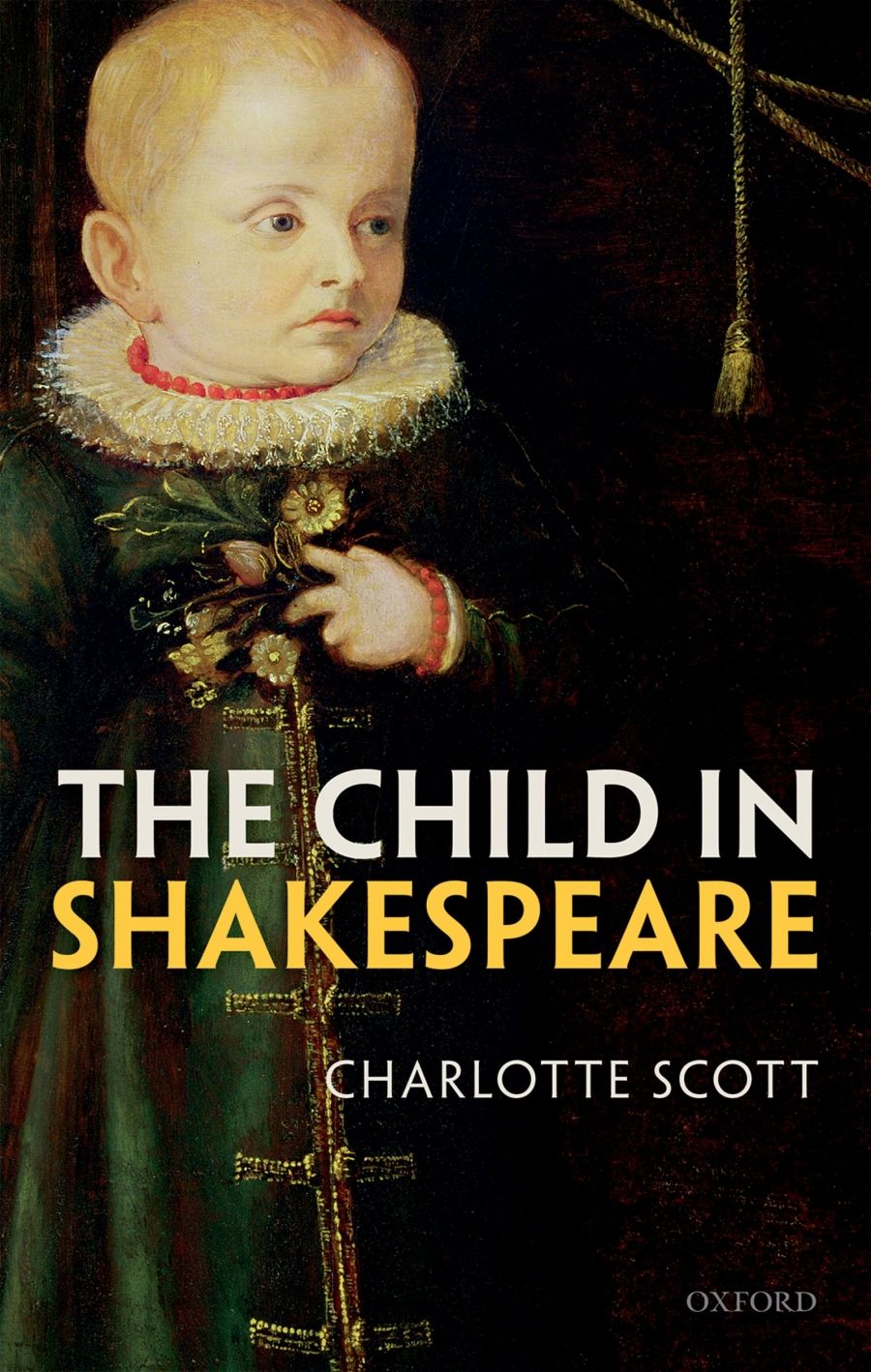
- Free Article: No
- Contents Category: Shakespeare
- Review Article: Yes
- Online Only: No
- Custom Highlight Text:
The figure of the child stands at both ends of human experience in Shakespeare’s plays. The span between our ‘mewling and puking’ infancy and our ‘second childishness’ of old age runs to little more than a dozen lines in Jacques’s famous ‘seven ages of man’ speech in As You Like It, before we slip into ‘mere oblivion, / Sans teeth, sans eyes, sans taste, sans everything.’ In the intervening years, our identity as children might shift as we undergo rites of passage into adulthood, as our relationships with our own parents evolve or as we become parents ourselves. But the child – the archetype of our essential nature – waits patiently for our return. Even Lear, the grand patriarch who disowns the truth-speaking child of his heart, must be racked on the fiery wheel of experience before he can become the ‘child-changed father’ Cordelia recognises in the end.
- Grid Image (300px * 250px):

- Book 1 Title: The Child in Shakespeare
- Book 1 Biblio: Oxford University Press, $100 hb, 192 pp
- Book 1 Readings Link: booktopia.kh4ffx.net/xW4o5
Charlotte Scott’s The Child in Shakespeare surveys more than two hundred references to children in the plays to argue that ‘the child represents the single most powerful relationship in Shakespeare’s drama’. Yet as Scott is quick to concede, Shakespeare wrote only a handful of roles for child-aged actors, the most notable being Henry VI (historically aged five) in Henry VI Part I, Mamillius (about seven) in A Winter’s Tale, Arthur (twelve) in King John, Princes Edward and Richard (twelve and eight) in Richard III, Juliet in Romeo and Juliet, and Miranda in The Tempest (both thirteen). Only two of these children survive the final act of their respective plays. Indeed, the first child Scott discusses in depth, the phantom infant invoked by Lady Macbeth to rouse her husband’s blood-lust, is dead before the play even begins: ‘I have given suck, and know / How tender ’tis to love the babe that milks me; / I would while it was smiling in my face / Have plucked my nipple from his boneless gums / And dashed the brains out, had I so sworn as you / Have done to this.’ Although Scott draws on a fascinating array of contemporary religious handbooks, pedagogic texts, and household manuals to flesh out their thin bones, Shakespeare’s children tell us little about the lived experience of early modern childhood, except that it was often nasty, brutish, and short.
Yet there were more children hidden on the Elizabethan stage than these few roles suggest. Female characters of all ages were typically played by prepubescent boys drawn from the popular children’s companies, the ‘eyrie of children’ mocked by Rosencrantz in Hamlet. The children’s companies emerged out of medieval mystery plays where children performed allegorical roles embodying Christian values such as Truth, Faith, and Justice. Thus, Scott argues, the true power of Shakespeare’s children is symbolic. They stand as moral mirrors to ‘the values, agonies, pleasures, and conflicts of the play-worlds they inhabit’.
This is particularly true in history plays such as Richard III, where the credulous princes fall victim to the subtle gestures and slant meanings of a corrupt adult world they are unable to interpret. ‘Sweet prince,’ smiles Richard at his nephew, ‘the untainted virtue of your years / Hath not yet dived into the world’s deceit.’ In King Lear, Cordelia is rendered mute by the obsequious rhetoric of her elder sisters, whose hollow words of love undo the bonds of family they profess to cherish. Romeo and Juliet dramatises the death of childhood and the perilous vulnerability of adolescence. Children are notably absent from Shakespeare’s comedies, a genre that revolves around marriage, a process of socialisation that marks the transition to adulthood. In A Midsummer Night’s Dream, the forest exists as a dream of childhood, a place the lovers look back on with nostalgia but must leave in order to become husbands and wives.
The parent–child relationship is central to many of Shakespeare’s plays, and Scott is especially interested in the dynamic between fathers and daughters. For Scott, what resonates throughout these texts is ‘an almost obsessive anxiety about forms of obedience’. This is hardly surprising in the context of early modern England, where the patriarchal structure of the family was commonly used as a metaphor for the state. For Scott, ‘Prospero’s role as a father cannot be separated from his role as a magus and the idea of power, paternal, princely, or magic, at its most potent, comes to involve all three.’ One text that is conspicuously absent from Scott’s analysis is Hamlet, a play overwhelmed by fatherless children. Hamlet, Ophelia, Laertes, and Fortinbras are all haunted by the ghosts of their lost fathers, trapped in a deadly cycle of grief, rage, and revenge. Although Hamlet is thirty years old, he is preoccupied with adolescent anxieties about sex and death, and mired in Oedipal obsessions. ‘You go not,’ Hamlet tells Gertrude in her bedchamber, ‘till I set up a glass / Where you may see the inmost part of you.’ For Scott, Shakespeare’s plays continually affirm that the role of the parent is ultimately to let go; in Hamlet it is the child’s inability to relinquish the primal bonds with his parents that leads to disaster.
The Child in Shakespeare examines only fourteen of the thirty-seven plays in detail, leaving significant room for further exploration. In the rigidly hierarchical context of early modern England, age was as important as gender or class in determining one’s place in society and relationships with others, yet it remains an understudied category of historical analysis. If childhood represents the first stage on our lifelong journey from innocence to experience, the figure of the child is central to all stories.


Comments powered by CComment